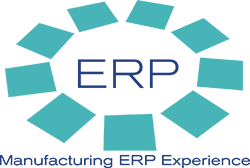 Louis Columbus
Louis ColumbusCustomer is King—It's Time for an ERP Epiphany in Complex Manufacturing
April 1, 2015Comments
For complex manufacturers to compete, they must revolutionize their IT-manufacturing strategy to put the customer, not production alone, at the center of their operations.
 Enterprise resource planning (ERP), pricing, services and supply-chain systems designed for high-volume business models aren’t scaling to the quickening cadence of customers and their more complex demands on manufacturers.
Enterprise resource planning (ERP), pricing, services and supply-chain systems designed for high-volume business models aren’t scaling to the quickening cadence of customers and their more complex demands on manufacturers.
From the complex manufacturers who built their businesses by bootstrapping special projects into products to those with global operations in dozens of nations, all are facing a similar challenge: how to make legacy manufacturing systems designed for volume deliver customer value instead. For many complex manufacturers, the challenge involves making their information technology (IT)-manufacturing systems deliver valuable, customer-centric insight and intelligence when they were designed purely for production efficiency.
Symptoms can be found everywhere in a manufacturing business when IT systems are mismatched with the company’s current business model—and most importantly—its customers. Incomplete or error-filled quotes, incorrect orders that need multiple reworking cycles in production, lost orders and build-to-order products that the company can’t produce at a profit are just a few of these symptoms.
 The solution is not to just speed up existing systems to get more done at current levels—that’s just automating mediocrity. Efficiency has never made a manufacturer more customer-focused. What’s needed is a completely new approach to defining IT strategies, taking into account the varying cadences of customers and their unique product and service customization requirements.
The solution is not to just speed up existing systems to get more done at current levels—that’s just automating mediocrity. Efficiency has never made a manufacturer more customer-focused. What’s needed is a completely new approach to defining IT strategies, taking into account the varying cadences of customers and their unique product and service customization requirements.
Many complex manufacturers are looking to cloud computing to selectively apply new technologies to the challenge of being more customer-centric. Hybrid-based cloud strategies that combine on-premise legacy systems and cloud-based applications that scale customer needs more effectively are working for many manufacturers today. My recent blog post on Forbes.com, Five Catalysts Accelerating Cloud ERP Growth in 2015, provides insights from a recent Price Waterhouse Coopers study that shows how pervasive hybrid cloud ERP strategies have become.
Cloud Computing Ideal for Measuring, Improving Bidding and Estimating
Reinvigorating IT-manufacturing systems by selectively using cloud computing is working, especially in the areas of bidding, estimating and quoting. Of the many aspects of any ERP systems that signal how a complex manufacturer operates internally, bidding, estimating and quoting say the most about how well a company is run. Bidding and estimating’s immediate impact on gross margins, profitability and the reverberating effects through work-breakdown structures (WBSs) for project-based manufacturing aren’t easily measured in manually driven systems, making cloud computing an ideal method to measure their worth.
The following are five strategies complex manufacturers are using to streamline manufacturing and positively impact bidding and estimating, thus delivering the revolution that their customers want:
1) Creating a single, unified system of engagement across an entire manufacturing operation has been shown to improve bidding and estimating by more than 50 percent. By creating a single version of the truth regarding all bidding and estimating activity, CFOs are better able to see how the many different approaches to creating business are interacting and succeeding.
2) To increase bidding and estimating close rates, get beyond tribal knowledge and create bidding and estimating systems that can scale globally across all channels. This relates to initiating and maintaining a strong change-management program to support automating bidding and estimating. The greater the knowledge sharing, the greater the trust that builds between departments.
3) Using internal audits to drive greater compliance to Six Sigma-driven improvements keeps the best manufacturers focused on being customer-driven. It’s not enough to say that you are customer-driven as a manufacturer. Unless you are willing to revamp and in some cases completely dispose of old processes that get in the way of serving customers, it’s all a lot of talk and no action. To excel as a manufacturer, get Six Sigma-driven change going and start measuring yourself like your customers do.
4) Incorporating a single, unified enterprise-wide bidding and estimating system is helping to standardize project teams, product divisions and business units on unified budget practices and consistent WBSs. Propagated company-wide in the production process, unified budget practices and consistent WBS definitions solve conflicts and make the daily operations of project teams, product divisions and business units more efficient.5) When bidding and estimating moves beyond a siloed or department-based function to an enterprise-wide system, target-cost analysis, competitive-bid response accuracy and timing, and lifecycle costing all improve. Integrating interdependent systems for greater project-based performance only occurs when trust is unleashed as a catalyst of permanent change. To make that happen, manufacturers must have bidding and estimating systems provide a level of accuracy and transparency that is not possible with siloed systems. MF
See also: IBASET
Technologies: Management







 Podcast
Podcast

